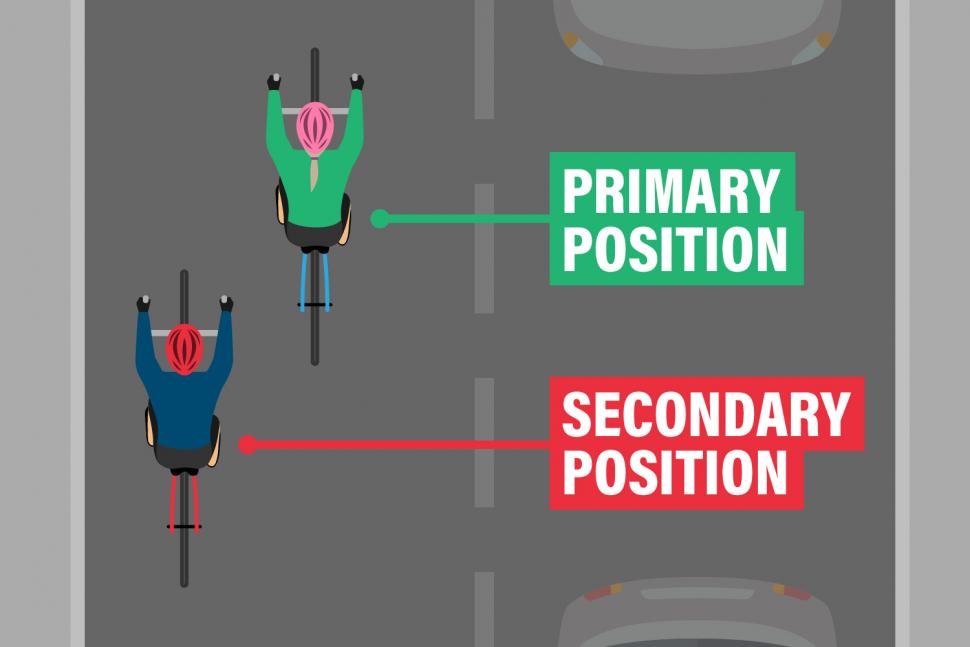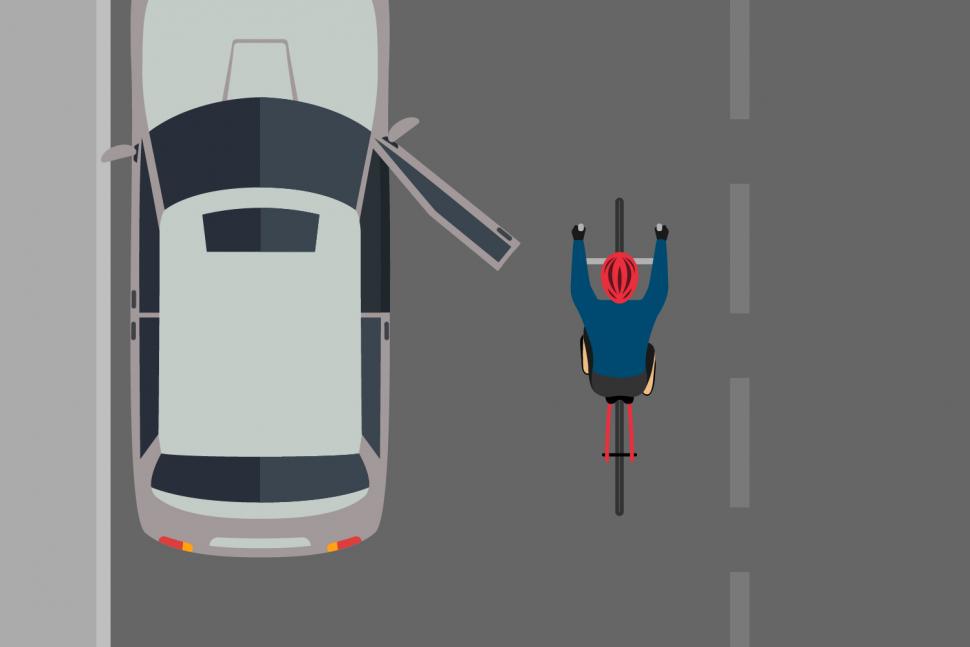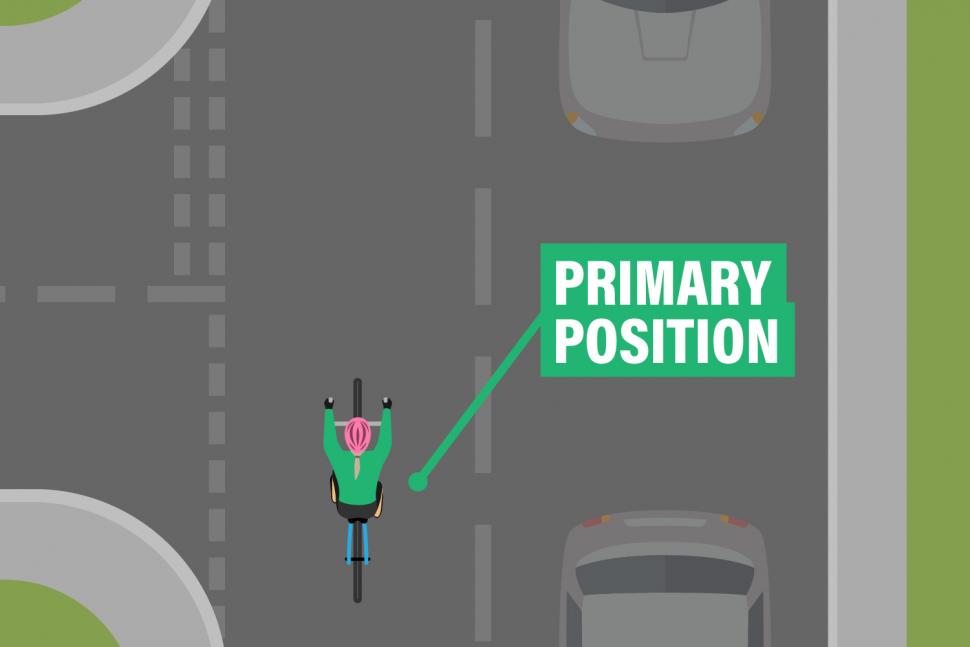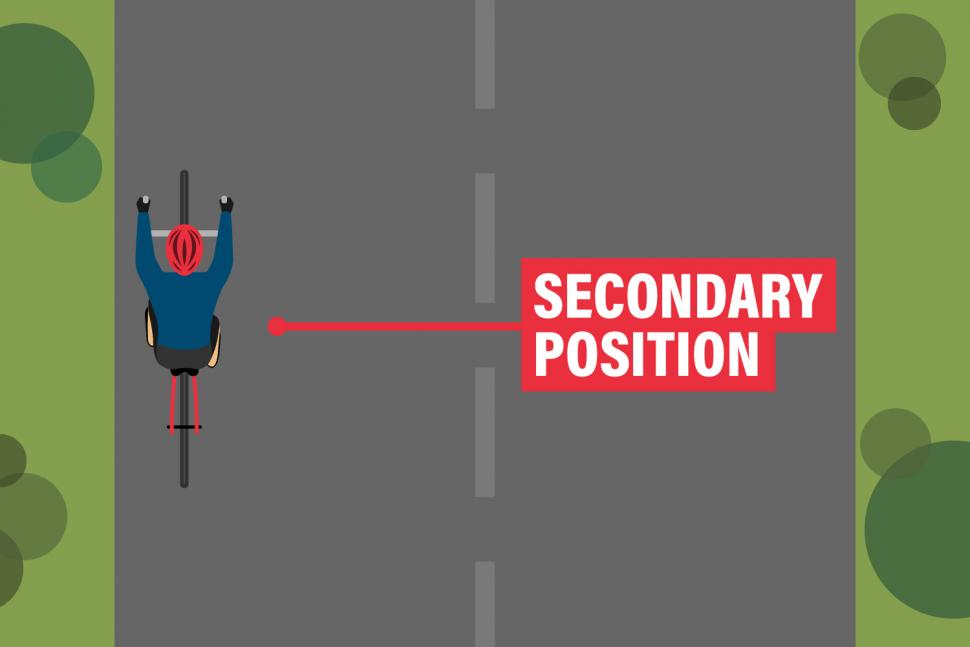- News
- Reviews
- Bikes
- Components
- Bar tape & grips
- Bottom brackets
- Brake & gear cables
- Brake & STI levers
- Brake pads & spares
- Brakes
- Cassettes & freewheels
- Chains
- Chainsets & chainrings
- Derailleurs - front
- Derailleurs - rear
- Forks
- Gear levers & shifters
- Groupsets
- Handlebars & extensions
- Headsets
- Hubs
- Inner tubes
- Pedals
- Quick releases & skewers
- Saddles
- Seatposts
- Stems
- Wheels
- Tyres
- Tubeless valves
- Accessories
- Accessories - misc
- Computer mounts
- Bags
- Bar ends
- Bike bags & cases
- Bottle cages
- Bottles
- Cameras
- Car racks
- Child seats
- Computers
- Glasses
- GPS units
- Helmets
- Lights - front
- Lights - rear
- Lights - sets
- Locks
- Mirrors
- Mudguards
- Racks
- Pumps & CO2 inflators
- Puncture kits
- Reflectives
- Smart watches
- Stands and racks
- Trailers
- Clothing
- Health, fitness and nutrition
- Tools and workshop
- Miscellaneous
- Buyers Guides
- Features
- Forum
- Recommends
- Podcast
feature
 road positioning - primary and secondary position.jpg
road positioning - primary and secondary position.jpgMonday moaning: Why don't cyclists stick to the left of the lane?
Armchair experts, especially those on social media, will often tell you that cyclists should be positioned on the left side of the lane, never centrally, but what's the truth? Here's what you need to know to set the record straight.
We recently reported on road.cc that a Hove cyclist who suffered a close pass by a school bus was told that the driver thought she would have moved over – despite the fact that the space to her left was a parking bay. There's clearly some misunderstanding of correct road positioning out there.
The first port of call on matters like this is usually the Highway Code (remember that not all of the rules in the Highway Code are legal requirements), and for a while, admittedly, it said nothing about how cyclists should position themselves within a lane apart from when dealing with junctions and parked vehicles.
However, with last year's update came changes designed to better protect vulnerable users, plus some handy guidance on road positioning for cyclists.
As per Rule 72:
When riding on the roads, there are two basic road positions you should adopt, depending on the situation.
1) Ride in the centre of your lane, to make yourself as clearly visible as possible, in the following situations
- On quiet roads or streets – if a faster vehicle comes up behind you, move to the left to enable them to overtake, if you can do so safely.
- In slower-moving traffic – when the traffic around you starts to flow more freely, move over to the left if you can do so safely so that faster vehicles behind you can overtake.
- At the approach to junctions or road narrowings where it would be unsafe for drivers to overtake you.
2) When riding on busy roads, with vehicles moving faster than you, allow them to overtake where it is safe to do so whilst keeping at least 0.5 metres away, and further where it is safer, from the kerb edge. Remember that traffic on most dual carriageways moves quickly. Take extra care crossing slip roads.
Despite what some people would have you believe – spoiler alert: not everything written on social media is true – there's no rule that says cyclists should always be on the left-hand side of the lane (we'll talk about the related subject of riding two abreast in a separate feature, by the way).
One cause of confusion could be Rule 160, aimed at all riders and drivers rather than cyclists in particular: "Once moving you should keep to the left, unless road signs or markings indicate otherwise. The exceptions are when you want to overtake, turn right or pass parked vehicles or pedestrians in the road."
This refers to the left hand-side of the road, though, not to the left hand-side of the lane. Plus, there's a distinction in the Highway Code between 'must/must not' instructions which are legal requirements, and 'should/should not' and 'do/do not' rules which are advisory. Rule 160 is clearly among the latter.
One other thing the Highway Code has to say about cyclists' lane positioning is Rule 67: you should "take care when passing parked vehicles, leaving enough room (a door's width or one metre) to avoid being hit if a car door is opened, and watch out for pedestrians stepping into your path".
You need to be at least a door's width out when passing parked vehicles, and 1.5 metres is often recommended.
What about at other times?
RoSPA (Royal Society for the Prevention of Accidents) says, "Don’t ride in the gutter; there may be debris and grid covers, and it will encourage drivers to squeeze past you even if there isn’t enough room."
We all know that hugging the kerb means that when you do encounter a drain, broken glass or anything else lurking at the side of the road, your only means of avoiding it is to steer outwards – perhaps sharply – into traffic that's potentially passing at a speed much faster than you. That's clearly dangerous. Hugging the kerb also reduces your visibility to drivers coming out of side roads and drives.
In his cycling skills manual Cyclecraft – which forms the foundation of Bikeability, the UK's national standard for cycle training – John Franklin talks about two main riding positions: the primary riding position and the secondary riding position.
He defines the primary riding position as being "in the centre of the leftmost moving traffic lane for the direction in which you wish to travel", and the secondary riding position as being "about 1 metre (3 feet) to the left of the moving traffic lane if the road is wide, but not closer than 0.5 metre (1.5 feet) to the edge of any road."
Riding in the primary position, also known as 'taking the lane', is all about safety. John Franklin says that this is where you can best see and be seen, and are able to maintain the straightest and fastest course.
"The primary riding position should be your normal riding position when you can keep up with traffic, when you need to emphasise your presence to traffic ahead, or when you need to prevent following drivers from passing you unsafely," he says.
'Close pass' initiatives by police around the country promote safety by telling motorists to leave at least 1.5m of space when overtaking a cyclist, but you've doubtless experienced many coming by far closer than that. Riding in the primary position discourages this by forcing traffic behind you either to stay put or to overtake only when the opposite/adjacent lane is free.
It's often best to take the lane before passing a side road joining from the left, for example – after looking over your shoulder to make sure that it's safe, of course, and signalling if you to need to communicate your intention to other road users.
Moving out increases your visibility to traffic at the junction, gives you more space to manoeuvre if the joining traffic edges out, and stops a vehicle squeezing by and turning left across your path at the last moment.
Similarly, the primary position can be best in slow and stationary traffic, when the road surface near the edge is poor, on narrow or winding roads, and through traffic calming schemes. You can also use it when approaching 'give way' signs, traffic lights, roundabouts, when turning at junctions, and in many other situations.
No one is suggesting that you ride in the primary position just to be awkward. Far from it.
"Because the primary riding position can result in some inconvenience to following drivers, it is reasonable to ride further to the left when this could help others, so long as your own safety is not thereby impaired,"says John Franklin (his emphasis).
British Cycling says, "When riding in the primary position, [you] should travel at a reasonable speed, as part of the traffic flow. If, however, traffic is building up behind [you] and the road ahead is clear, [you] may wish to move to the secondary position to avoid obstructing other road-users unnecessarily.
"The secondary road position may be appropriate if the road is wide enough to allow safe overtaking, and the rider’s safety is not reduced by riding in this position."
Why don't cyclists always use cycle lanes?
With that in mind, you might take up the secondary road position on minor roads where there are few parked vehicles, for example. However, the take-home points are that you're not obliged to position yourself to the left of your lane, riding in the primary riding position is the best option in many circumstances, and your safety trumps another road user's wish for you to shift to the side.
Matt Woodcock, Cycling UK Training Manager said, “Whether you’re new to cycling or an old hand, you’re hopefully familiar with the concept and importance of proper road positioning – and will probably have heard the terms ‘secondary’ or ‘primary position’ and will know that you shouldn’t hug the kerb.
“In the absence of decent cycling infrastructure across most British roads, proper road positioning is one of the most important things you can do to keep yourself safe while out cycling, but it can be a bit confusing to know where you should be at which point and sometimes counterintuitive, especially if you’re new to cycling.
"To help all road users understand cyclist road positioning, Cycling UK created two short films which show where and how cyclists should ride, especially in key areas like junctions, turnings and pinch points.”
The first one covers road positioning and junctions...
...while the second offers five tips to stay safe...
Mat has been in cycling media since 1996, on titles including BikeRadar, Total Bike, Total Mountain Bike, What Mountain Bike and Mountain Biking UK, and he has been editor of 220 Triathlon and Cycling Plus. Mat has been road.cc technical editor for over a decade, testing bikes, fettling the latest kit, and trying out the most up-to-the-minute clothing. He has won his category in Ironman UK 70.3 and finished on the podium in both marathons he has run. Mat is a Cambridge graduate who did a post-grad in magazine journalism, and he is a winner of the Cycling Media Award for Specialist Online Writer. Now over 50, he's riding road and gravel bikes most days for fun and fitness rather than training for competitions.
Latest Comments
- Rendel Harris 4 sec ago
Same here re-SUVs, in fact possibly even more women than men driving them, there seems to be a pattern in very rich areas of households owning one...
- Homebaker 27 min 34 sec ago
And today's award for the dumbest comment goes to cool kitty
- Tom_77 52 min 38 sec ago
The SaddlePod looks nice, but if you're in the UK by the time you've paid shipping ($31) and import duty (who knows where we'll be with that come...
- VIPcyclist 53 min 54 sec ago
Instantly on the discounted list due to the ridiculous price.
- TheBillder 56 min 5 sec ago
I've had (past tense is deliberate) 3 of these over the past 5 years. I'm back here researching for a replacement as my last one broke last week. I...
- chrisonabike 2 hours 57 min ago
And the next time - plead sympathy for your addiction, caused by trauma from your previous "accident"...
- wtjs 3 hours 58 sec ago
Butyric Acid... was the most disgusting thing I have ever smelt in the lab...
- ubercurmudgeon 3 hours 31 min ago
Even a stopped clock, etc, etc...
- Bigtwin 4 hours 53 min ago
I wouldn't be meeting that Orange Pillock anywhere, let alone 1/2 way.




Add new comment
43 comments
I take the primary position because most of the roads I ride, like a large proportion of the roads in this country, were laid, or last had their lane markings redrawn, back when cars weren't nearly as wide as they are now. And a lot of drivers, especially the we-pay-road-tax/take-back-our-country kind, are loathed to cross the centre line to overtake a cyclist. If you give them a chance, they'll squeeze through, at no risk to them but plenty to you. The trouble is, they learnt to drive in Minis in the 60s and 70s, but now own Range Rovers, and make no allowance for the extra 68cm of girth. I'm sure they reckon I'm hogging the road, given all the engine revving coming from behind, but my vehicle hasn't increased in width from 46cm in decades.
Is that extra girth of the vehicle or the driver?
Both, I presume. Both people and cars have gotten measurably wider over the last 20 or 30 years (by about a foot, in the case of the average car, I think, a bit less than that for people).
Oddly that has happened at the same time as population density has increased. You'd think everything would be getting thinner, in order for everyone to fit in.
the human form is evolving towards a sphere so that when all packed together they will fit perfectly, like soap bubbles.
https://brilliant.org/wiki/math-of-soap-bubbles-and-honeycombs/
I always ride in primary position now. I get far less punishment passes.
In an early paragraph you write that moving outwards into traffic is "clearly dangerous" and "reduces your visibility to drivers coming out of side roads and drives". This is incorrect, which is the whole point of riding in primary position, and in fact throughout the story you contradict it, even explicitly stating "Moving out increases your visibility to traffic at the junction".
The key thing to remember is to put yourself where drivers are looking, and in general they're looking where they expect to see cars and other things that may threaten them.
This advice was formulated in the days before smartphones and in-car breakfasts. If you can get yourself onto every phonewatcher's live stream or breakfast bowl you'll be safe.
The explanation of why it's dangerous is in the situation of being too close to the kerb and steering out further into the lane to avoid debris/gutter etc, that reactive sharp outward steering can have horrible consequences (into faster moving traffic) because they (motorists) aren't giving you enough space as we know all too well.
This is not the same as moving out under control or already being in primary, so if you are already well positioned and have moved into that position in the first instance or having done shoulder check before pulling off you are less likely to need to move out at last second, move much less outward (so that might just mean a slight turn of the bars and the wheels deviate a couple of inches as opposed to two or three feet) than if you were closer to the kerb or can actually move inward to avoid the obstacle.
How can you know where any given driver is looking at from behind at any given point and how can you determine what they are focussing on where they are looking? you're guessing, you shouldn't need to be thinking like that most of the time. If you are vehicular riding then you position yourself almost as if you were driving, passing junctions where the exit is hidden, there's parked or even stationary vehicles then you can move even further than primary to give you and any other party extra reaction time and distance.
Riding primary leading up to left turns is also useful/safer, you see more into the junction before you've committed, you're keeping the same line into the lane thus preventing dangerous overtakes when the driver cannot see or is looking at that bin lorry coming up or a vehicle exiting their driveway that is right near the junction. There's a petrol station near me with its exit back onto the estate road I turn into for home and it's less than 20m from the junction, many a time vehicles have pulled out wide from there and any following vehicle behind me would if I were to be too close taking the corner have to brake very hard if they can react in time, drive extremely close or simply hit me to avoid collision. Me riding wide at that juncture gives them no opportunity to overtake right at the apex and therefore they have to hold back and rethink how to pass me.
I also don't like BC wording re having to go at a reasonable speed otherwise you're obstructing, why, motorists obstruct all the time on that basis, what is that speed anyway? if I need to be primary for my safety I will go at the speed I'm ordinarily going at, I am not ceding my safety so some other person can get to their destination a few seconds earlier. They need to stop with that nonsense and stop with the moton thinking, cyclists ARE traffic and motorists often go slow in 'primary' - or 'middle of the road' and obstruct people on bikes from making faster progress!
Typical of them to not get it, basically motorists who happen to ride bikes!
No, it's hugging the kerb that we said reduces your visibility to drivers coming out of side roads and drives. We thought that was pretty clear but we've altered the wording now to prevent any further misinterpretation.
thank you
Exactly. Whether approaching a right or left turn, you need to move to primary in order to "look into" the junction. Given the number of twats who insist on parking on the corners of junctions, it is pretty much essential.
Now if someone could re-write this using shorter words, larger font and preferaby interspersed with females letting their mammory glands get some air, we could possibly encourage a few white van and taxi drivers to have a read.
Asos Woman holding up all the pictures on boards, like women used to to tell you what round it was in boxing or wrestling on world of sport c.1974?
OMG!! What a terrible sweeping statement...
Pages